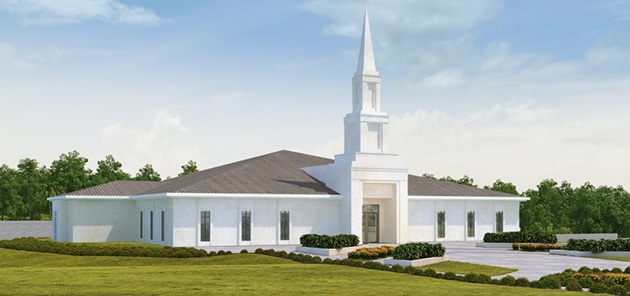
By Sorella M
Thank you Adia J. Olguin for your blog post on Exponent II. You inspired me to finally write these words.
To my Mormon sisters and brothers in Africa or who hail from Africa, I would like to share some things that I have long dreamed of correcting about my Mormon ancestors’ actions toward blacks and black Mormons if I had a voice in church leadership. Dallin H. Oaks, first counselor to Russell M. Nelson, famously said, “the history of the [Mormon] church is not to seek apologies or to give them” (Peggy Fletcher Stack, “No Apology, Really?” Salt Lake Tribune, 30 January 2015). Oaks’ words upset me every time I read them. I wish that just the opposite were true, and so I have designed a wish list of actions which, if I had a voice in LDS policy, I would implement immediately:
1) Formal apology: I would ensure that Mormonism’s top leaders apologized for their racist Mormon doctrines of the past that prohibited all members of African descent from entering LDS temples, and that apology would become a part of the printed LDS canon. This means that said apology would be an official proclamation or declaration that would be inserted into the scriptures at the back of the Doctrine and Covenants. I would also correct LDS scripture, removing or revising all verses in the Book of Mormon and Pearl of Great Price that describe dark skin as cursed and white skin as preferable or a sign of curses being lifted. My childhood scriptures have already been corrected in this manner (“white and delightsome” in my childhood scriptures was changed to “pure and delightsome” in present-day LDS scriptures) so there is a precedent for doing this.
2) Temple equality: Elder Neil L. Andersen, of the quorum of the twelve apostles, recently told a group of Mormons gathered in San Diego that the new temple being built in Nigeria will have a more humble design because the church doesn’t want to give the impression that Latter-day Saints in Africa are wealthy, for fear they could be kidnapped and held for ransom. I appreciate this concern for their safety, but I also feel it grossly unfair that white Mormons get to worship in elaborate, grandiose temples while black saints in Africa attend humble, pared-down temples. I would therefore require all temples to be equal in style and design to those built in Africa. If I had any input into church policy matters, I would not settle for anything less than temple equality for all races and nations, period.
3) Temple clothing: If I had the authority, I would stop teaching Mormons to equate whiteness with godliness in their temple dress. I would teach the doctrine that color is beautiful because designed by the same God who created rainbows and a gloriously colorful earth populated with people of many colors. In America, white robes were a symbol of the KKK, and black robes are symbols of authority, knowledge, professionalism, and excellence, worn by judges and people earning degrees from higher institutions of learning. Black suits are required attire for missionaries for the same reason (sister missionaries can wear pants but aren’t allowed to wear pantsuits; don’t ask me why!). The colorful fabrics of the African people are glorious and should be allowed inside the house of God, in my opinion. If I had the authority, I would declare that color is beautiful, color is godly, and I would invite an array of colorful fabrics into the house of the Lord, rather than banning every color except white.
4) Temple fees. If I had the authority, I would not charge any admission to the house of the Lord. I especially would not require people from war-torn or third-world countries who struggle to make ends meet to pay ten percent of their income in order to receive ordinances which leaders tell them are necessary to live with God again. I don’t believe that God charges a fee to return to His presence, and I truly believe that if He did, He would waive the fees of those living in areas where warlords, corrupt politicians, and famine and disease ravage the land. I might be alone in my beliefs, but if I were in charge of temples, I would welcome all my African brothers and sisters (and many, many others) to worship without first paying the church to do so.
Being a woman, I have neither the authority nor ability to have my voice heard among Mormon leadership in these matters. But being a sister to all and a fellow human being, I express here my love for all of God’s children and my wistful wishes for greater equality. I do apologize for the egregious sins of my Mormon ancestors and wish that those in power over the modern Mormon church would make reparations for the unjust treatment that blacks received and are still receiving (such as with so little black representation among our highest ranks of leadership, inferior temple design, and more). I am doing what I can on the local and church-wide level to make these points heard, and invite Latter-day Saints everywhere to join me in apologizing and seeking to repair the damages done by our ancestors, even if worldwide leaders will not.






7 Responses
Well said, Sorella. I would also like to see the temple movie use people of color to represent Adam and Eve and apostles. We have no proof they were all white. In the Ogden temple there is a beautiful life size portrait of a black woman praying. With all the new changes in the endowment ceremony, I’m hoping they made a temple movie for the African temples ( and ours too) with black models instead of all white. The temple movie changed because the leaders did hear from women (and men) about parts that needed to be changed. So maybe our voices do get heard.
In my Relief Society book club, I have chosen books that discuss racial inequity, such as Hidden Figures, They have generated a very open discussion.
Yes! The temple movies definitely need people of color as Adam and Eve and as Jesus Christ and God. I’ve thought that for so long.
Thank you so much for sharing, Sorella. I hadn’t heard about the “plain” temples being built in Africa, but I absolutely agree with you that that is problematic. It reminds me of benevolent patriarchy; how men make policy to “protect” women without any women having the final say in the policy. I don’t know if there’s a term for “benevolent racism” (perhaps colonialism?), but I appreciate you bringing some of that to light with your perspective. And yes, if the church expects its members to repent, it needs to hold itself to the same standard. And I feel weird about temples charging for clothing rental–it seems really insensitive to those on tight budgets. Thanks for articulating why that’s problematic.
Love those suggestions! I would add that LDS underwear be only worn in temples – I cannot even fathom wearing such restricting, hot underwear in tropical climates.
The image I got while reading your post of the Celestial room full of all of us in vibrant colors took my breath away. Thank you for that gift.
I love your post! I hadn’t realized that African temples were more humble. I had assumed that all temples were very elaborate. When I had first seen the temple picture above, I had mistaken it for a stake center. I think you should write a letter to the First Presidency if you’d like to. Your reasons are valid and church leaders need to hear it. I hope they make those changes you mentioned.
#4 really speaks to me. I’m at a point in my life where I have a choice–I can pay a full tithe or I can get out of debt. (The debt is primarily from student loans + a child’s medical issues.) We’ve been commanded to tithe AND to get out of debt. I chose to do the first for a while and now I am doing the second instead. Until I get the debt paid–and it’s going to be about 8 years–I can’t go to the temple. But at least there’s an end in sight. I already feel humiliated and ‘less than’ for not having a recommend. I can’t imagine being in a position where I knew I couldn’t ever afford to pay tithing.